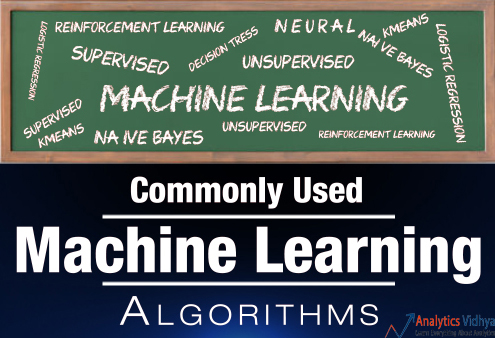#1.
We are probably living in the most defining period of human history. The period when computing moved from large mainframes to PCs to cloud. But what makes it defining is not what has happened, but what is coming our way in years to come.
What makes this period exciting for some one like me is the democratization of the tools and techniques, which followed the boost in computing. Today, as a data scientist, I can build data crunching machines with complex algorithms for a few dollors per hour. But, reaching here wasn’t easy! I had my dark days and nights.
Who can benefit the most from this guide?
What I am giving out today is probably the most valuable guide, I have ever created.
The idea behind creating this guide is to simplify the journey of aspiring data scientists and machine learning enthusiasts across the world. Through this guide, I will enable you to work on machine learning problems and gain from experience. I am providing a high level understanding about various machine learning algorithms along with R & Python codes to run them. These should be sufficient to get your hands dirty.
I have deliberately skipped the statistics behind these techniques, as you don’t need to understand them at the start. So, if you are looking for statistical understanding of these algorithms, you should look elsewhere. But, if you are looking to equip yourself to start building machine learning project, you are in for a treat.
Broadly, there are 3 types of Machine Learning Algorithms..
1. Supervised Learning: 지도 학습
How it works: This algorithm consist of a target / outcome variable (or dependent variable) which is to be predicted from a given set of predictors (independent variables). Using these set of variables, we generate a function that map inputs to desired outputs. The training process continues until the model achieves a desired level of accuracy on the training data. Examples of Supervised Learning: Regression, Decision Tree, Random Forest, KNN, Logistic Regression etc.
문제와 답지를 이미 가지고 있다. 이를 통해 함수를 만들어서 원하는 수준의 정확도를 나타낼때 까지 반복한다.
2. Unsupervised Learning: 비지도 학습
How it works: In this algorithm, we do not have any target or outcome variable to predict / estimate. It is used for clustering population in different groups, which is widely used for segmenting customers in different groups for specific intervention. Examples of Unsupervised Learning: Apriori algorithm, K-means.
답지 없이 문제만 있다. 문제를 clustering하면서 답지를 유추한다. 정답을 볼 기회가 없다.
3. Reinforcement Learning: 강화 학습
How it works: Using this algorithm, the machine is trained to make specific decisions. It works this way: the machine is exposed to an environment where it trains itself continually using trial and error. This machine learns from past experience and tries to capture the best possible knowledge to make accurate business decisions. Example of Reinforcement Learning: Markov Decision Process
오목 두는 방법을 가르치지 않고, 승패만 이야기해 준다. 수많은 시행 착오를 통해 스스로 오목의 rule을 배우도록한다.
List of Common Machine Learning Algorithms
Here is the list of commonly used machine learning algorithms. These algorithms can be applied to almost any data problem:
- Linear Regression
- Logistic Regression
- Decision Tree
- SVM
- Naive Bayes
- KNN
- K-Means
- Random Forest
- Dimensionality Reduction Algorithms
- Gradient Boost & Adaboost
'Machine Learning & Data Mining' 카테고리의 다른 글
| Essentials of Machine Learning Algorithms #3. Decision Tree & SVM (0) | 2015.09.26 |
|---|---|
| Essentials of Machine Learning Algorithms #2 Linear and Logistic Regression (0) | 2015.09.26 |
| Deep Learning Tutorial (0) | 2015.09.22 |
| Deep learning 기반 T map POI 추천 기술개발 사례 (0) | 2015.09.22 |
| 윤영식_ 'Growth Hacker/Machine Learning' (0) | 2015.09.22 |

